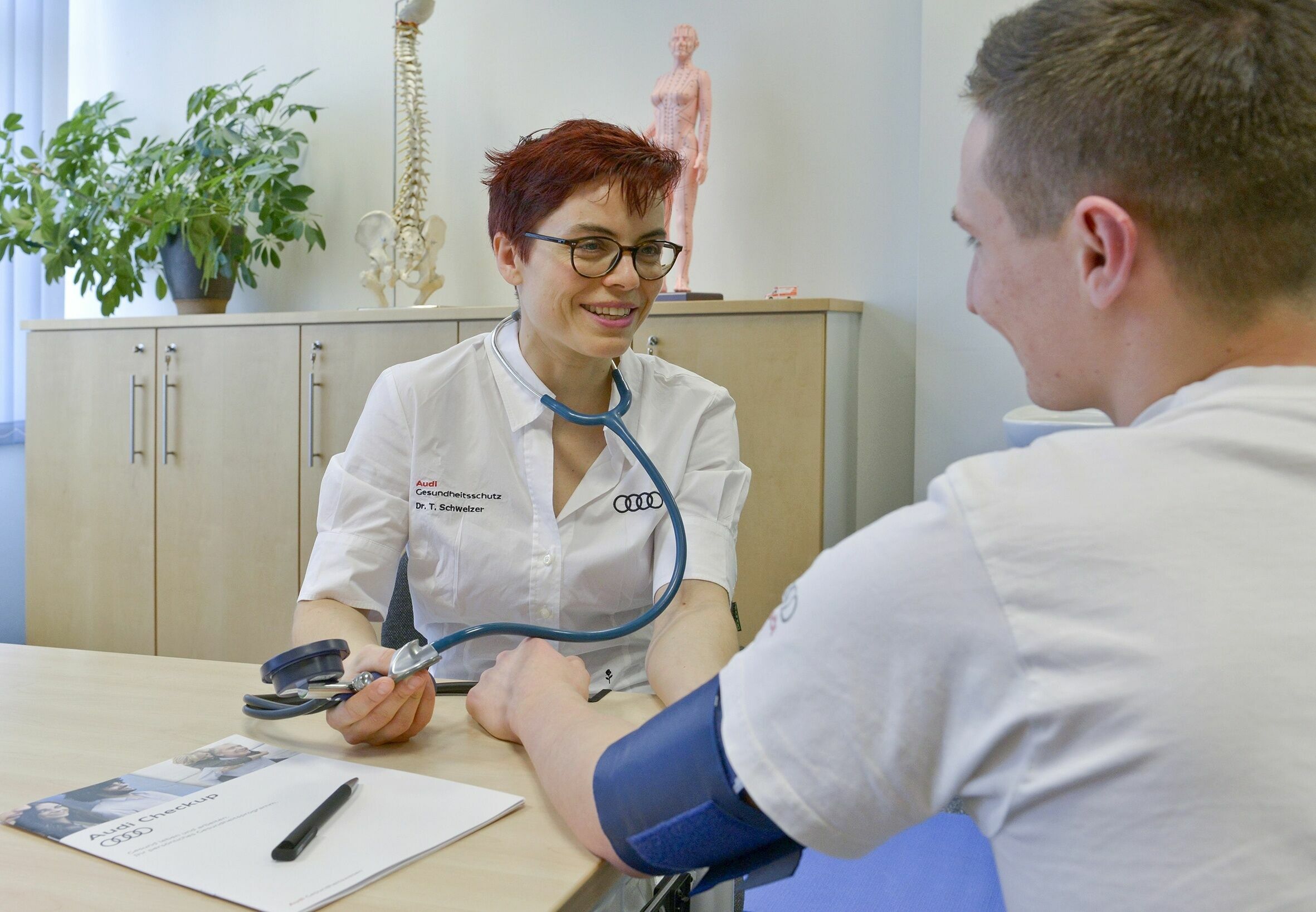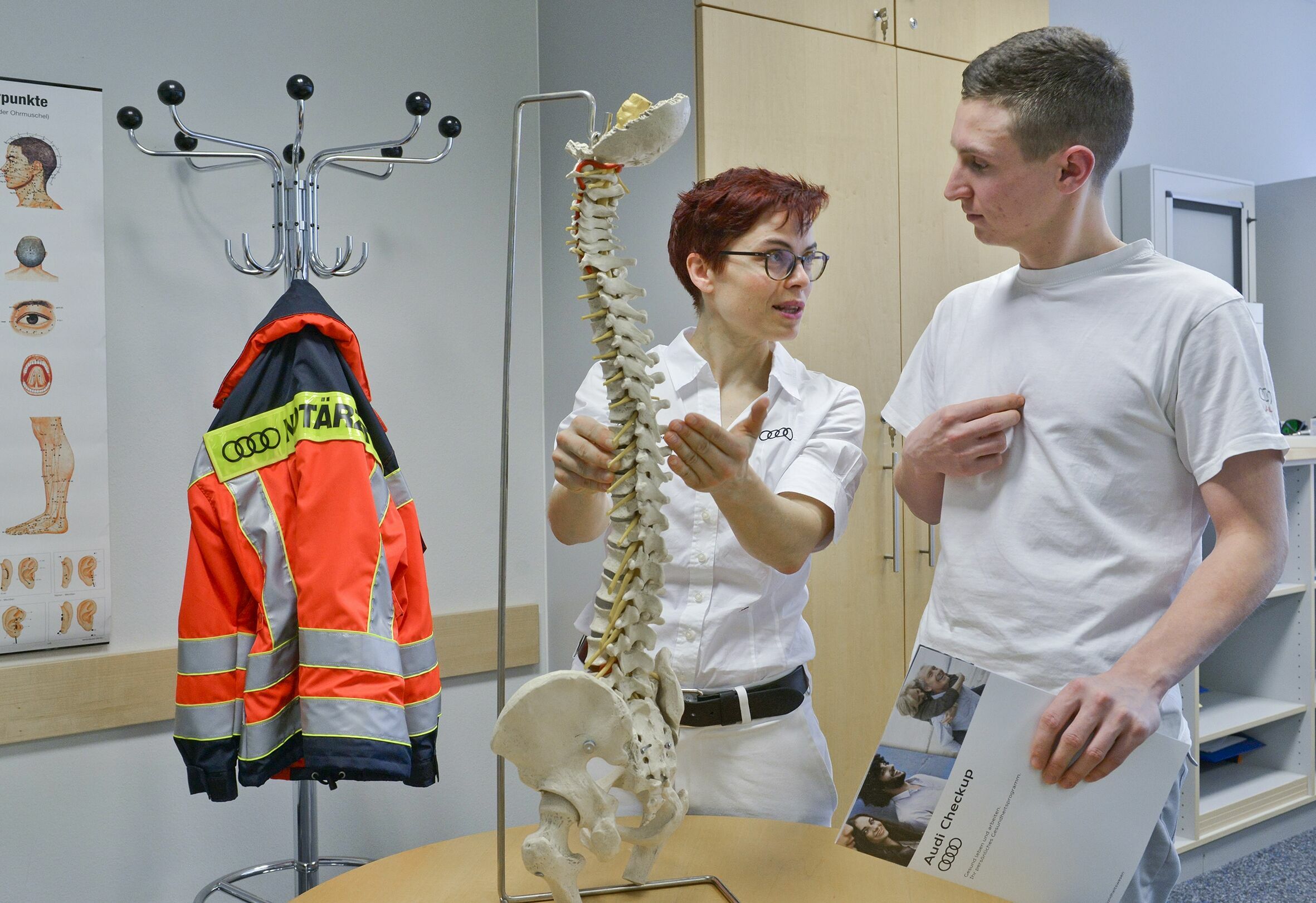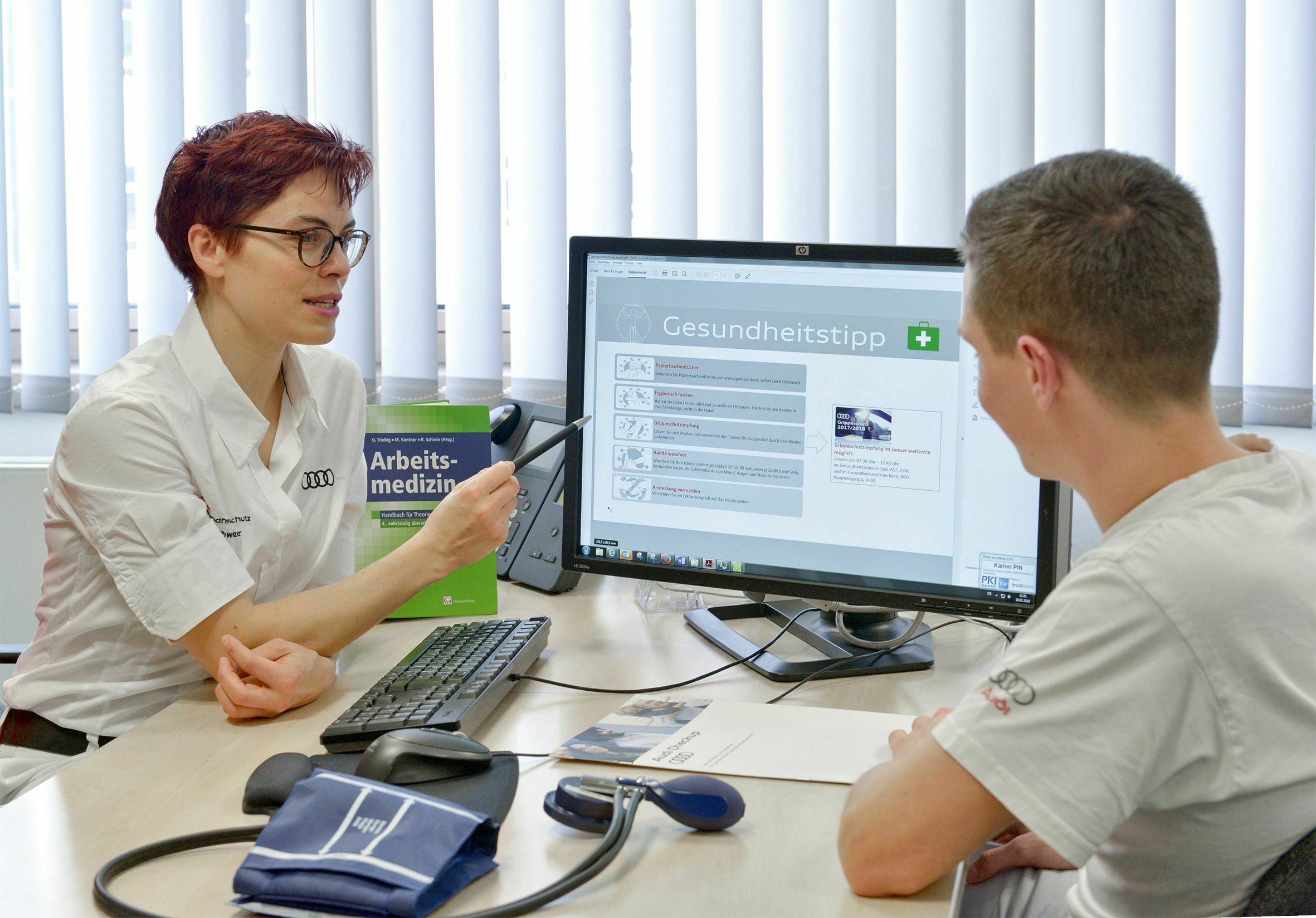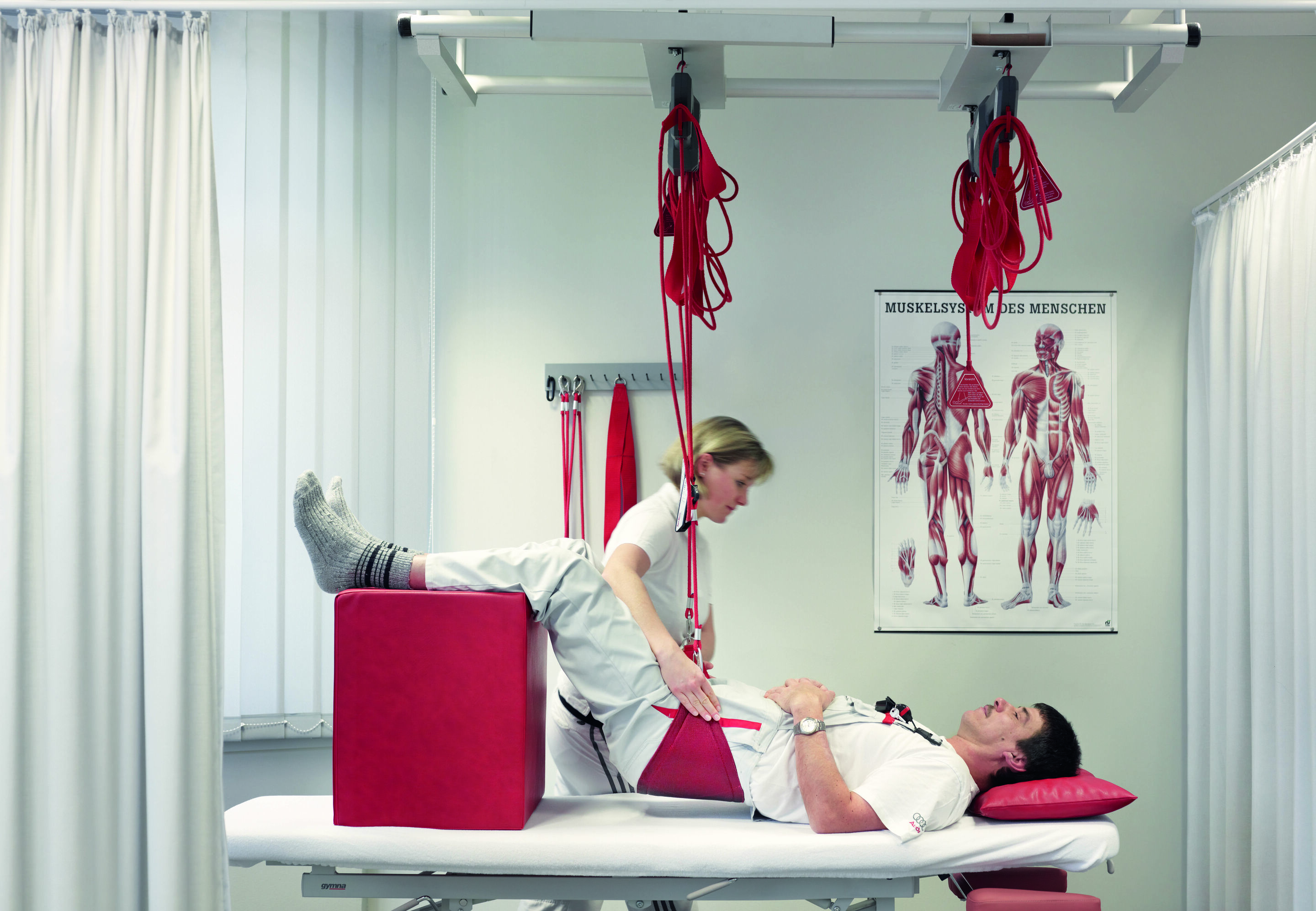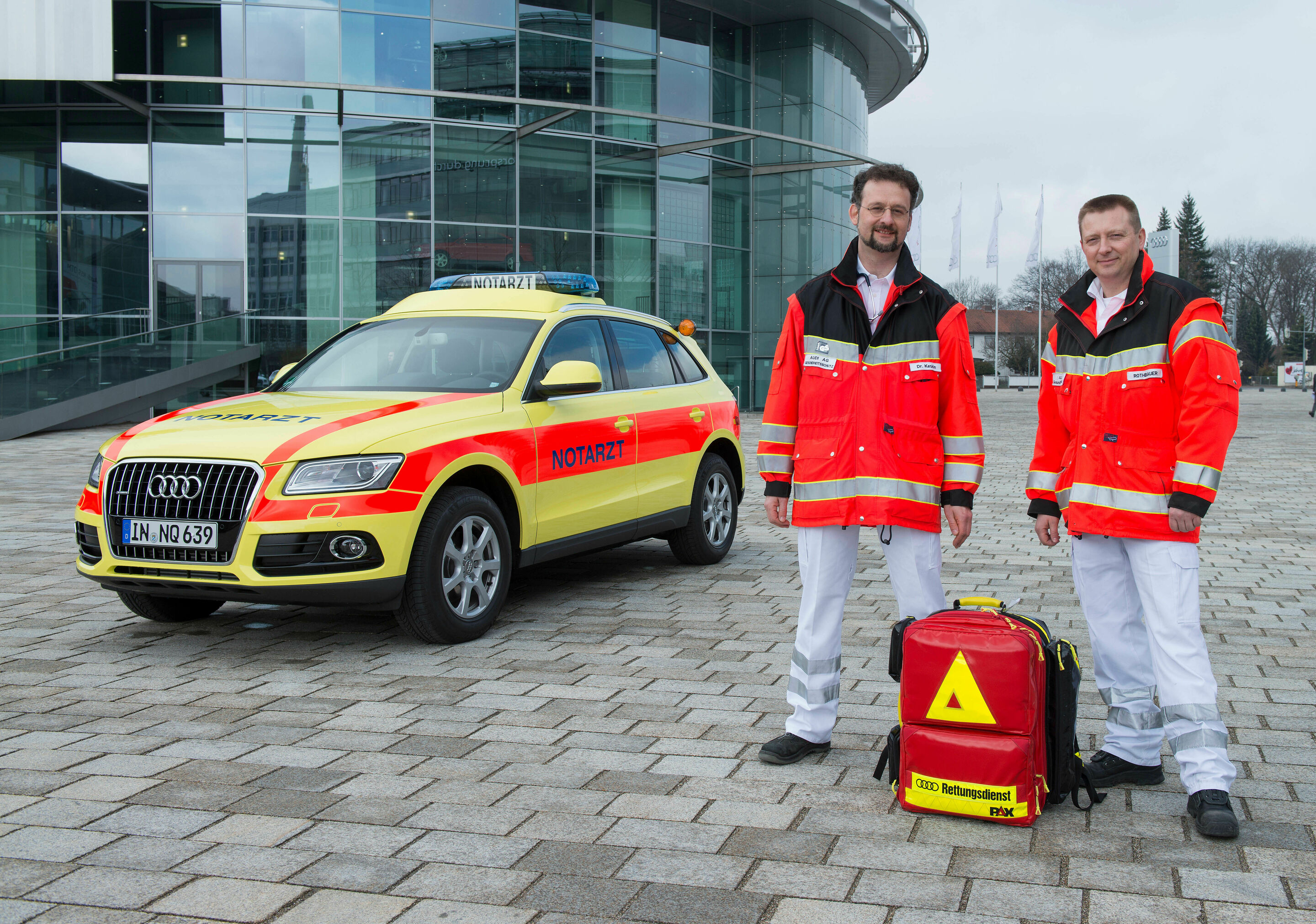Anniversary in the year of the coronavirus:
100 years of health protection at Audi
- In action around the clock – 24/7 – on behalf of physical and mental health
- Chief HR Officer Maaßen: “Employee health is our top priority”
- General Works Council Chairman Mosch: “We have achieved a great deal together in 100 years”
Good health is in higher demand than ever: Audi Health Protection is celebrating its 100th anniversary in 2020. Thanks to the coronavirus, there will be no big celebration. “The coronavirus pandemic has once again demonstrated the central importance of our health, both in society and at companies. At Audi, the health of our employees is at the forefront of everything we do,” says Chief HR Officer Sabine Maaßen.
The first full-time paramedic started working at NSU, a predecessor of the four rings, in Neckarsulm in 1920, marking the birth of professional health protection at Audi. In the beginning, the focus was on caring for employees in the event of injuries or acute emergency situations. This aspect is still an essential element today. “If something happens at the plant, for example if somebody has a heart attack, we usually arrive at the scene within three minutes. This proximity and speed of action helps to save lives,” says Andreas Haller, Head of Audi Occupational Health. Health protection at the four rings now has many facets, ranging from acute and emergency medical attendance, preventative occupational health care, individual prevention, and the inclusion of employees who receive consultation on their job due to health-related limitations, and all the way to workplace design itself, which should be ergonomic, safe, and maintain the employees’ health. “Most recently, we made the workstations at Audi ‘coronavirus-ready,’ for example. We work very closely and very successfully with many partners in the company in this area,” says Haller.
The Works Council is an important partner in this cooperation. Peter Mosch, Chairman of the General Works Council of AUDI AG: “To us as the employee representation, accident prevention in the company and our colleagues’ health are very important. If you look back at the beginnings of industrial work – including in the automotive industry – and compare that with today’s occupational safety standards, it is clear that things have come along way at both the company and political levels over the past 100 years. I am very grateful to all the members of the in-house occupational health protection committees – on-site company doctors, managers, and members of the Works Council – who are working together with great commitment to set a high standard for health protection at Audi.”
The spectrum of Audi Health Protection extends from the Audi Checkup and “Jeder hat Psyche” all the way to operations outside the plant gates
What started out small in 1920 has evolved tremendously over the space of a century. Today, there are three Occupational Health Centers at the two Audi sites in Germany: one in Neckarsulm and two in Ingolstadt. More than 100 employees see to the wellbeing of their colleagues at Audi – in Germany, but also at the international locations of the four rings, together with their medical colleagues on-site. In Belgium, Mexico, and Hungary, for example, there are separate branches for employee health protection. The range of services of Audi Occupational Health has also increased considerably in the course of the decades: Today, health protection comprises not only occupational health care and the prevention of work-related illnesses and occupational illnesses, company health and integration management, acute and emergency medical care but also individual preventive health. For example, the Audi Checkup was established in 2006:
The aim is to identify health risks early on, prevent chronic illnesses, and convey knowledge on health-conscious behavior. Roughly 90 percent of employees take advantage of this voluntary examination and preventive program regularly. Since the program started in 2006, more than 100,000 employees have take part, and more than 10,000 Audi employees went for a checkup in 2019 alone. The Audi Checkup is part of the works agreement on health, on the basis of which the company and Works Council have committed to maintaining, promoting, and restoring the physical and mental health of the employees.
Audi Health Protection doesn’t just do what is expected but also goes the extra mile: for example with the current campaign “Jeder hat Psyche. Why not talk about it?”. This campaign has been in existence since last year’s World Mental Health Day (October 10). The project aims to promote a more natural approach to the topic of mental health and thereby contribute to destigmatizing mental illness. The employees involved in the project provide information at company events, hold their own information events, distribute flyers and other information material, and raise awareness about points of contact for Occupational Health, such as the established consultation hour on mental health or the consultation hour on addiction. The four rings have had offers relating to mental health for a long time, but it was the current campaign that provided many employees with an incentive to open up and talk more openly about their own issues or offer their help to affected colleagues.
Occupational Health also takes social responsibility, for example with its offering for employees to register with the worldwide database for the battle against leukemia during their working hours. Audi has been working with the relevant institutions in this field for many years and pays the laboratory costs for typing. As a result, there are numerous stem cell donors – and thus lifesavers – among the Audi employees.
Audi paramedics responded to more than 1,300 external emergencies
Speaking of lifesavers: The Audi emergency paramedics are not there just for the Audi employees but also for the people who live at the locations. On the basis of corresponding agreements, they can also respond to emergencies outside of the plant gates. This is the case, for example, if the local rescue control center determines that the Audi emergency medical service is closer and can therefore get to the site of the accident more quickly than another emergency medical service. In 2019 alone, the Audi paramedics were called to more than 1,300 external emergencies to cover peak demand. Audi “chief physician” Haller says: “We are happy to do our bit for our home regions here. At the same time, we benefit from these emergency responses as well: Our paramedics are always very well trained.” As regards the Audi workforce, occupational physician Haller has one big goal: “We want our employees to be fit and healthy when they start their well-deserved retirement after reaching retirement age.”
